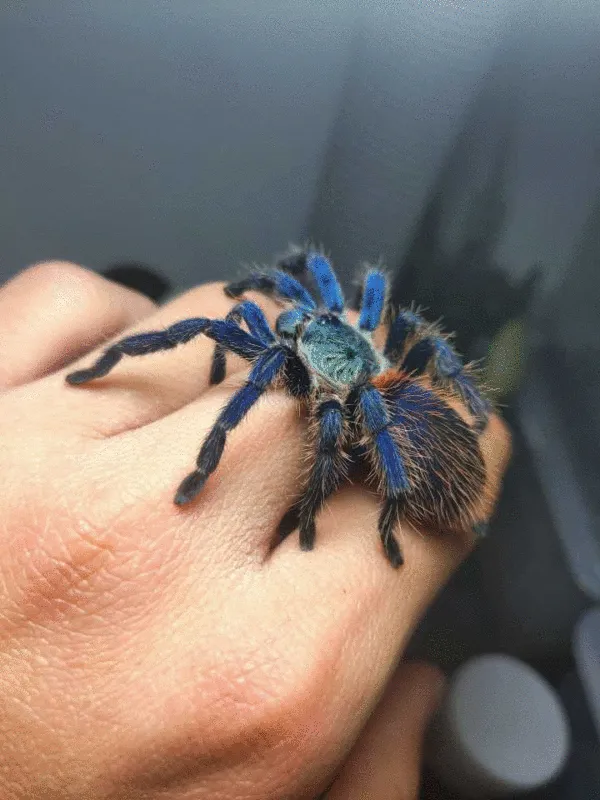What is a Dwarf Beauty Tarantula?
The Dwarf Beauty Tarantula, scientifically known as Cyriocosmus elegans, is a captivating and relatively small species of tarantula, native to South America. These spiders are increasingly popular in the pet trade due to their manageable size, striking appearance, and relatively docile temperament. Unlike some of their larger, more intimidating cousins, Dwarf Beauty Tarantulas offer a fascinating glimpse into the world of arachnids without the extensive space or specialized care requirements that can be associated with bigger tarantula species. They are often favored by both novice and experienced keepers who appreciate their beauty and the unique behaviors they exhibit. These spiders add a touch of exotic elegance to any collection.
Appearance and Characteristics
Dwarf Beauty Tarantulas are aptly named, showcasing a remarkable aesthetic appeal. Their carapace, the hard shell covering their cephalothorax, is typically a deep, glossy black, often contrasted by vibrant orange or reddish hairs on their legs and abdomen. This striking combination creates a visual symphony that is both alluring and fascinating. Their relatively small size contributes to their charm, making them visually less imposing than many other tarantula species. This blend of color and size makes them a favorite among enthusiasts.
Size and Colors
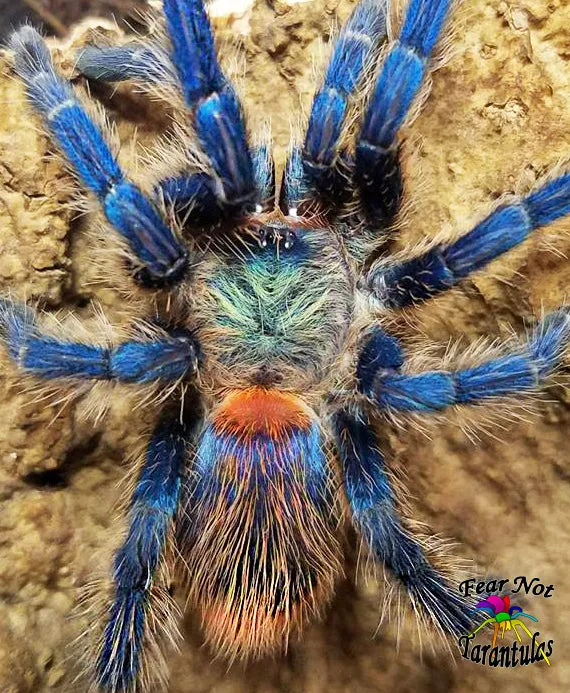
One of the defining characteristics of the Dwarf Beauty Tarantula is, of course, its size. Adults typically reach a leg span of only about 1 to 1.5 inches, making them significantly smaller than many other tarantulas. In terms of coloration, the base color is usually black with patterns of red or orange hairs on the legs and abdomen. The intensity and specific pattern of these colors can vary slightly from one individual to another, adding to the uniqueness and appeal of each spider. The combination of their diminutive size and colorful patterns contributes to their popularity as pets, as they can be kept in relatively small enclosures, making them ideal for those with limited space or experience.
Habitat and Native Range
Understanding the natural habitat of the Dwarf Beauty Tarantula is crucial for providing proper care in captivity. These spiders are native to South America, specifically found in regions like Guyana, Suriname, and French Guiana. Their environment plays a significant role in their survival, influencing their behavior, feeding habits, and overall health. Replicating their natural environment as closely as possible is key to ensuring their well-being and allowing them to thrive in a captive setting. This means paying close attention to factors such as humidity, temperature, and substrate.
Where They Are Found
In their native habitats, Dwarf Beauty Tarantulas are typically found in tropical rainforest environments. They prefer areas with high humidity, plenty of leaf litter, and a moderate temperature. They often live in burrows or under leaf litter, providing a safe haven from predators and harsh environmental conditions. Their preference for these conditions should be considered when creating their captive environment, which directly impacts their survival and well-being. The specifics of their natural habitat give clues to how to best care for them as pets.
Ideal Habitat Setup
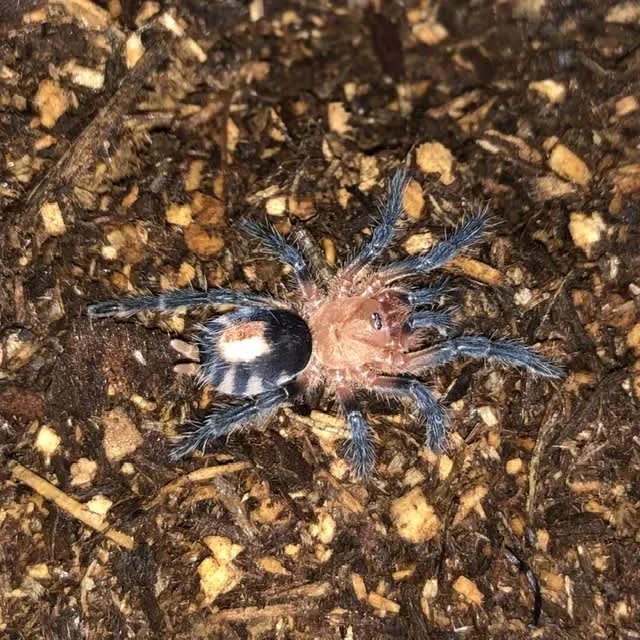
Creating a suitable habitat for a Dwarf Beauty Tarantula involves providing a comfortable and secure environment that mimics its natural surroundings. A small enclosure, such as a 5-gallon terrarium, is usually sufficient for an adult. The substrate should consist of a mixture of coconut fiber, peat moss, and a bit of sphagnum moss to help maintain humidity. Providing a shallow water dish is essential for hydration, and a hide, such as a piece of cork bark or a small artificial cave, will offer the spider a place to feel secure. Maintaining a temperature between 75-80°F (24-27°C) and humidity levels of 70-80% is crucial for their health. Regular misting and monitoring of the enclosure are essential for maintaining these conditions.
Diet and Feeding Habits
The diet of a Dwarf Beauty Tarantula consists primarily of insects, reflecting their carnivorous nature. Understanding their feeding habits is essential for providing them with a nutritionally balanced diet and ensuring their overall well-being. Providing the right type and amount of food is crucial for the health of this small but fascinating arachnid. The specifics of their diet, including what they eat, how often, and any supplements that might be necessary, should be carefully considered to keep them healthy and thriving.
What They Eat
Dwarf Beauty Tarantulas primarily feed on small insects that are readily available in captivity. Crickets, small mealworms, and flightless fruit flies are common choices. It’s important to ensure the insects are pesticide-free and appropriately sized for the spider. The size of the prey should be roughly the size of the spider’s abdomen. Variety in the diet is beneficial; therefore, offering a mix of different insect types can help ensure they receive a wide range of nutrients. Avoid overfeeding to prevent unnecessary stress.
Feeding Frequency
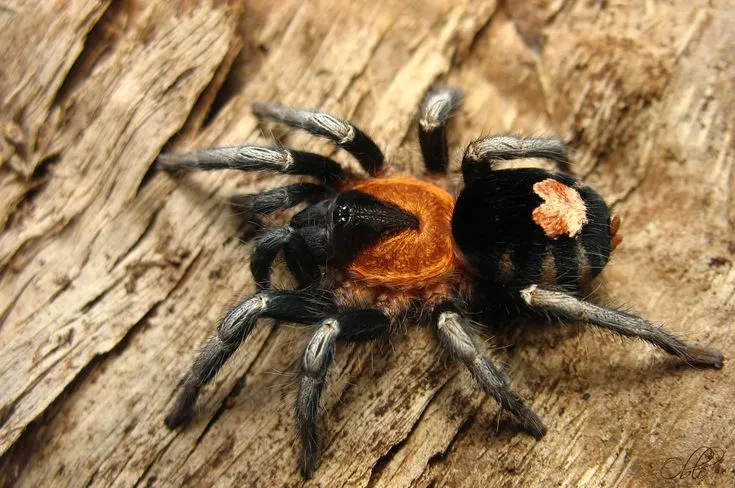
The feeding frequency for Dwarf Beauty Tarantulas depends on their age and growth stage. Spiderlings should be fed every other day or every day, providing small, appropriately sized insects. As they mature, feeding can be reduced to once or twice a week. It’s important to observe the spider’s behavior and adjust feeding accordingly. A tarantula that refuses food may be preparing to molt, or it may have already eaten enough. Always remove uneaten prey after 24 hours to prevent stress and potential harm to the spider.
Lifespan and Growth
The lifespan and growth patterns of a Dwarf Beauty Tarantula are fascinating aspects of their biology. Understanding these factors provides insight into their care and how to properly manage them over time. Their lifecycle, from the initial stages of development to adulthood and through their molting processes, offers a compelling look into the world of arachnids. Lifespan and growth also provide clues to how you should take care of your pet.
Typical Lifespan
Dwarf Beauty Tarantulas have a moderate lifespan compared to other tarantula species. Females generally live longer than males, with females often living for up to 5-7 years, while males typically mature and have a shorter lifespan, sometimes as short as a year or two after reaching maturity. This difference in longevity is typical among many tarantula species, and it is a key aspect to consider when choosing a pet. Knowing the expected lifespan can help owners prepare for the long-term care of their tarantula, fostering a deep appreciation for these unique creatures.
Molting Process
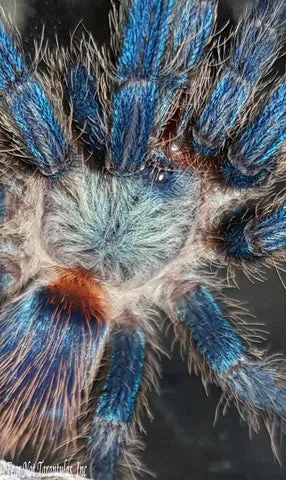
Molting is a crucial part of a tarantula’s life cycle, allowing them to grow and replace their exoskeleton. Dwarf Beauty Tarantulas molt periodically, shedding their old exoskeletons to reveal a new, larger one. Before molting, the spider may become less active and may refuse food. They typically lie on their backs during the molting process, which can take several hours. It is crucial to avoid disturbing the spider during this time. After molting, the tarantula’s new exoskeleton will be soft, and it is vulnerable. Avoid feeding the tarantula for several days after a molt to allow the new exoskeleton to harden.
Temperament and Handling
The temperament of a Dwarf Beauty Tarantula is another attractive feature for potential keepers. They are generally known for being relatively docile and are less likely to display defensive behaviors compared to some of the larger tarantula species. Their small size contributes to the overall level of safety when it comes to handling, but it is still vital to approach with caution and understanding. However, even with a typically docile temperament, understanding how to handle these spiders safely is essential for the well-being of both the spider and the handler.
Handling Tips
While Dwarf Beauty Tarantulas are relatively docile, handling should be kept to a minimum, as it can be stressful for the spider. If handling is necessary, do so carefully and gently. Always wash your hands before and after handling. Allow the spider to walk onto your hand rather than picking it up. Keep your hand close to a surface to prevent a fall, as falls can be fatal. Always handle over a soft surface. Observe the spider’s behavior; if it appears stressed or agitated, gently return it to its enclosure.
Things to Avoid
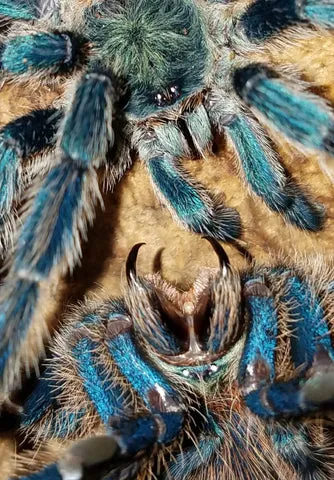
There are several things to avoid when interacting with Dwarf Beauty Tarantulas to ensure their well-being. Avoid sudden movements or loud noises, as these can startle the spider and lead to defensive behavior. Do not try to handle the spider during molting or immediately after. Avoid direct contact with the spider’s fangs, as they can inject venom. Never use force when handling or attempting to move the spider. Regular observation and careful handling will promote a stress-free environment for your Dwarf Beauty Tarantula.
